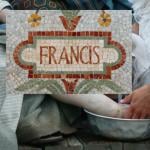Browsing through library databases and catalogues today, it is difficult to find even a handful of hits on Mormonism and Asian race. Even Armand Mauss’ recent sweeping study, All Abraham’s Children, notably omits any specific inquiry on the subject, though he meticulously dissects an LDS understanding of Blacks, Native Americans, and Jews.[1] Yes, some inferences may be made by delving into historical studies on missionary work in the Far East, but a comprehensive look into what it meant to be Asian in Mormonism and, perhaps more importantly, how the particular theologies came to be, are disappointingly diaphanous. Happily, from what I have previewed of Reid Neilson’s recent dissertation, I suspect that this dearth in Asian-LDS race scholarship will soon have an outstanding historical foundation on which to develop. Subsequently, I will not attempt to trace every intricate historical nuance of the subject but rather focus on my own particular research into how cultural influences created and shaped Mormon conceptions of Asian Race between 1880 and 1930.

The LDS conception of Asian Race shifted dramatically at the turn of the last century. The first era, roughly from 1880 to 1905, established a rigid hierarchy clearly favoring the Japanese over the Chinese. As cultural attitudes became more entrenched through the popular media, LDS magazines soon picked up these accepted assumptions. By 1901, the concept of an Asian hierarchy was so enmeshed in Mormon thought that explanatory theologies of what was termed “believing blood” began to appear in Conference addresses and missionary work.
The second era, dating approximately from 1905 through 1930, suddenly and dramatically “demoted” the Japanese down to the level held by the Chinese and categorized them both as “regrettably” “Mongolian” which race, as one 1891 LDS article noted, “exerted little influence upon the world’s history.”[2] And, just as the first era engendered theological speculation, the second followed by dropping the idea of “believing blood” to favor a new concept of Asian lineage through Japheth, the son of Noah. Through analyzing the cultural pressures and attitudes prevalent during these two eras, perhaps a more rounded analysis of Asian racial conceptions may emerge than simply a recounting of events.
Racial conceptions and even theologies were not formed in a bubble, sealed off from modern thought and American mores. Rather, Mormons gathered in the knowledge available to them to rationally construct a worldview that, over time, took on religious significance.
For example, at the Gateway Mall in downtown Salt Lake City, any visitor can walk through the restored central terminal of the old Union Station. Two large murals dominate the North and South walls, each celebrating different moments of arrival into Utah. First, the pioneer train, and second, the arrival of the transcontinental railroad. Completed in 1869, the transcontinental railroad established Utah as a bustling hub for coast-to-coast travel and commerce. The economy in Northern Utah boomed and Salt Lake City often hosted visiting dignitaries and celebrities. And, along with the railroad came the Chinese. At one point, twelve thousand hired by the Central Pacific line worked their way from California and into Promontory Point where right before honored guests arrived with a golden spike, “a gang of Chinese, in clean blue jackets, moved out to put the final, east rail in place.”[3]
After its completion, many Chinese chose to stay in Utah, providing railroad maintenance, opening shops and laundries in emerging Chinatowns, or mining coal and copper. The Chinese outnumbered all other Utah minorities except the well established Native American population and they garnered significant attention from curious local journalists and even Union Station’s unknown mural artist. In the mural commemorating the railroad on the North Wall, three Chinese men look on from the extreme left and though marginalized visually and culturally in Utah, they were still a noticeable presence.
The settlement of Chinese immigrants presented a problem, however. Not only did their presence shatter the previously territory-centric worldviews of LDS settlers, but it also demanded an explanation for their very existence. Previous to the opening of the transcontinental railroad, Mormons had not put much thought into Asia. The world consisted of Lamanite Native Americans, Hamite people of African descent, and the Caucasian “Jews” and “Gentiles.” The world made sense, but by 1880 and the rise of Salt Lake, Ogden, and Park City’s Chinatowns, there was another other.
To answer these questions, Utahns turned to science and their own observations in an attempt to place the Chinese within an understandable context. Explanatory articles began to appear in local newspapers describing their physiology, habits, beliefs, and culture. Unfortunately, by 1882, Utahns were also informed by the Chinese Exclusion Act and articles telegraphed in from other American newspapers underscored established prejudices from across the country.[4] In 1888, the Utah legislature passed its first anti-Asian miscegenation statute, prohibiting marriage between a “Mongolian” and a white person on then commonly accepted grounds of eugenics.[5] [As a note, that law was not repealed until 1963]. It is also probable that Utah Mormons specifically were concerned about marrying outside of the House of Israel based on biblical injunctions against intermarriage between God’s chosen and pagan unbelievers.
Beyond law, local newspapers repeated and reemphasized racial stereotypes. Between 1890 and 1891, for example, the Provo Daily Enquirer ran numerous explicitly anti-Chinese articles. One report of a funeral in Central Utah accused the Chinese of human sacrifice and “bacchanalian reveling.”[6] Other articles emphasized the “bizarre” joss idols and openly scoffed at Chinese accents as the immigrants attempted to speak more “Melican.”[7] By 1896, The Ogden Standard Examiner went so far as to matter-of-factly report that “the Chinese practice cannibalism.”[8] From this prolific cultural atmosphere of 1880s and 90s Utah, it is not surprising that official church publications would take up similar subjects as simply accepted fact.
The Young Woman’s Journal in 1893, compares Chinese medicinal practices to the “awful and blood-curdling remedies practiced by the witches of New England fame.”[9] Superstition and inexplicable rituals such as observed in healing practices labeled the Chinese as clearly unenlightened and even at time devilish. Racial assumptions also piggy-backed with phrenology and evolutionary science. In The Contributor, for example, an 1894 article entitled “The Brain of the Chinaman” reports that a Chinese brain is “very nearly what is to be found in the chimpanzee.”[10] The Chinese were also, apparently, morally depraved as other travel-log articles from the same publication describe female slavery and, without apology, a “filthy empire” of “d—ed” Chinamen.[11]
These conclusions made within LDS periodicals were undoubtedly cultural commentary rather than doctrinal statements. In an era hallmarked by forays into the most “modern thought” of the time, it would be surprising not to find such racial attitudes present in Mormon publications. Its prevalent presence in the Mormon mentality undoubtedly influenced the way missionary work and lineage constructions would be formulated by the turn of the century. However, to fully understand the developed doctrine of Asian lineage which peaked in 1901, one must first understand where the Chinese stood in relation to the Japanese. (to be continued…)
________________________________________
[1]Armand L. Mauss, All Abraham’s Children (Chicago: University of Illinois Press, 2003), passim.
[2] Willard Done, “The Origin of Profane History,” The Contributor 12:6 (April 1891), 223.
[3] Wesley S. Griswold, A Work of Giants: Building the First Transcontinental Railroad (New York: McGraw-Hill Book Company, Inc., 1962), 326.
[4] One good example of these reprinted articles can be found in the Provo Daily Enquirer (11 Feb 1890) “A Chinese Defaulter” which reprinted a telegraphed article from Chicago detailing the ways “Chinamen are rapidly getting into the ways of the country.” The Salt Lake Tribune’s “By Telegraph” series also showcases many of these anti-Asian reprints.
[5] “Miscegenation Statute, 1888.” Utah Laws, Chapter 45, Section 2, p 88.
[6] “Chinese Festivities: Strange Proceedings at a Funeral-Death of Big Ling,” Provo Daily Enquirer (11 Feb 1891), 1.
[7]“Chinese New Year: How the Celestials of Provo Spent the Day-Their Opium Den,” Provo Daily Enquirer (9 Feb 1891), 1; “A Chinese Romance,” Provo Daily Enquirer, (7 October 1890), 3.
[8] “Warfare in Formosa,” Ogden Standard Examiner (14 Feb 1896), 8.
[9] “Healing of the Sick,” The Young Woman’s Journal. 4:4 (1893), 174.
[10]“The Brain of the Chinaman,” The Contributor 15:10 (Aug 1894), 652.
[11] G.H. Snell, “Ramblings Around the World,” The Contributor 14:10 (August 1893), 485, 488.











